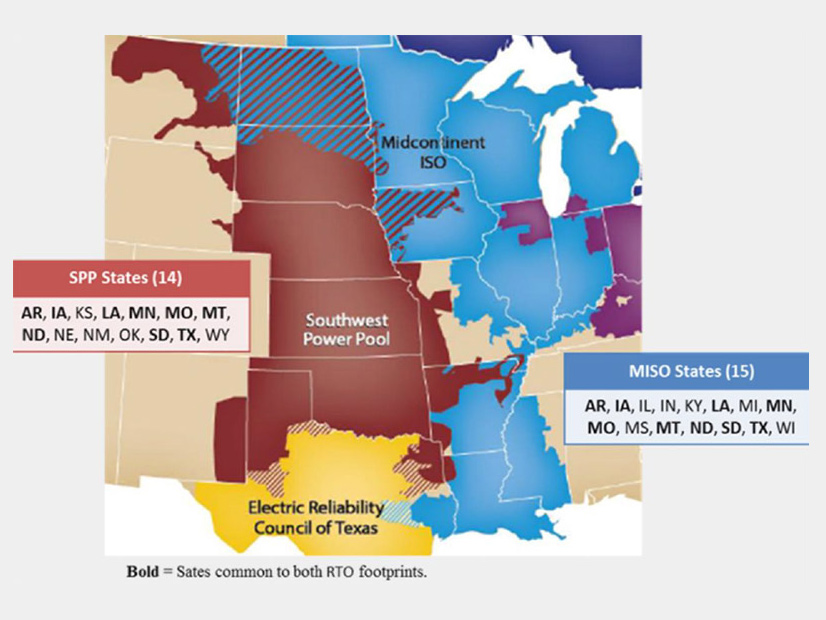MISO and SPP said last week they will likely establish a smaller interregional project type similar to MISO’s and PJM’s Targeted Market Efficiency Project (TMEP).
If approved, a TMEP — small, $20 million and under upgrades — could become the grid operators’ first interregional transmission project.
MISO’s Ben Stearney said the upgrades will be designed to handle persistent congestion on the RTOs’ SPP seam.
“I think the MISO-PJM process provides a pretty good framework,” he told stakeholders during Friday’s Interregional Planning Stakeholder Advisory Committee (IPSAC).
Stearney said the projects will use a “straightforward” benefit analysis that relies on historical market-to-market congestion. He said staffs must line up market data to identify beneficial projects.
He predicted it would take four to six months for MISO and SPP to draft a TMEP process under their joint operating agreement (JOA) and separately develop regional cost-allocation methods to divide costs among respective members.
Advanced Power Alliance’s Steve Gaw asked whether staffs could accelerate enshrining the TMEPs’ process in their JOA. “My read is you’ve got a lot of support for this,” Gaw said.
Stearney said the RTOs want to collect formal stakeholder feedback on the new study type before proceeding. “I really want to kick off this study process in earnest in 2022,” he said.
The RTOs’ state regulators have already asked the grid operators to commit to a TMEP-type category. (See MISO, SPP Regulators Call for Pancaking Fix, Smaller Projects.)
MISO executives have said TMEPs could focus on known problem areas, such as the congested Nebraska-Iowa and Kansas-Missouri seams. The chronically congested Neosho-Riverton flowgate on the Kansas-Missouri border has racked up more than $46 million in settlement charges due to SPP since 2015.
Stearney said TMEPs would “supplement” the grid operators’ coordinated system plan (CSP), a longer-term interregional study that typically looks out five years and beyond.
“We’re not trying to replace that longer-term study process,” he added.
MISO and SPP are still deliberating on whether they will pursue a CSP next year after deciding against conducting a study this year. The RTOs have instead combined on a joint targeted interconnection queue study that is searching for interregional projects to alleviate their jammed generator IC queues. (See No MISO-SPP Joint Study in 2021.)
The grid operators have conducted four CSPs since 2014 but have never found a project candidate beneficial enough to break ground on. (See 4th Time No Charm for MISO-SPP Interregional Study.)
They will hold another IPSAC in early 2022 to further discuss TMEPs and CSPs.


